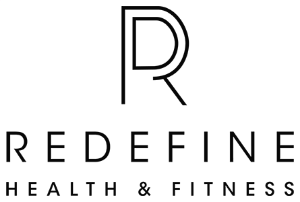THE ROTATOR CUFF - THE BASICS
The shoulder is a ball and socket joint, making it highly mobile and at risk for injury. Rotator cuff tears are common among the athletic population and as we age and our tissue healing capabilities reduce, a simple fall can tear the rotator cuff. But what does the term “rotator cuff tear” refer to? The purpose of this article is to describe the various muscles of the rotator cuff, the purpose of the rotator cuff, and injury prevention techniques.
The rotator cuff is composed of 4 muscles, which are the supraspinatus, infraspinatus, teres minor, and subscapularis. The function of the supraspinatus is to abduct the shoulder (move the arm out to the side) and has a weak external rotation action (have elbows bent and by your side, palms up, then squeeze shoulder blades together and keeping elbows to your side move palms behind you). The infraspinatus and teres minor externally rotate the shoulder. The teres minor also has a weak extensor action (arm by your side, then reach behind you). The subscapularis internally rotates the shoulder (same starting position as external rotation, but move palms towards your mid line).
The above four muscles work together to stabilize the highly mobile glenohumeral (shoulder) joint by holding the humeral head in the glenoid. The rotator cuff is the primary stabilizer of the glenohumeral joint, as the surrounding ligaments and joint capsule are weak stabilizers.. When one of these muscle is injured or torn, the stability of the shoulder is affected during dynamic motion. As each muscle has a different muscle action and origin and insertion point, you can see how understanding which muscle is torn is important in rehabilitation. Describing shoulder pain as a “rotator cuff tear” is not specific enough to create an effective plan of care.
The rotator cuff can be injured by trauma or repetitive use. Repetitive stress can be imposed by athletic activities (throwing, tennis, yoga), work tasks (lifting, pushing, shoveling etc), or something as simple as sitting in poor postural alignment for a long duration of time. When the rotator cuff is injured, the mechanics of the way the humerus rolls, glides, and translates in the glenoid is affected. This causes shoulder pain and weakness. As the affected person continues to use the shoulder in its injured state, it can begin to affect other structures of the shoulder. Muscle length and strength imbalances begin to form, leading to chronic pain.
To prevent shoulder pain from repetitive stress, you need to address the ergonomics of your work station and the mechanics of your recreational activity of choice. Strength and flexibility impairments should be identified. Once addressed, participating in strength based exercises in planes of motion specific to your activity will help build stability at the shoulder. A flexibility program targeting the shoulders, chest, and upper thoracic spine will also prevent injury.
If you are having shoulder pain or participate in repetitive upper body activities, contact a qualified fitness professional, physical therapist, or medical doctor to help address your current symptoms and develop a plan of care to prevent further injury and future pain. A comprehensive plan of care will include exercises targeting shoulder strength, endurance, flexibility, neuromuscular control, and alignment. If you are not having pain yet, instead of waiting for injury and investing months and finances in recovering, invest in yourself now and take precaution to ensure that you are training correctly.
Carla Pryor PT, DPT, OCS, RYT 200. Co Owner of Redefine Health and Fitness located in North County San Diego. Redefine is a wellness based company focused on providing excellent comprehensive and research driven care to assist clients in meeting their fitness and nutrition goals. Contact carla@redefinehealthandfitness.com for further inquiry.

